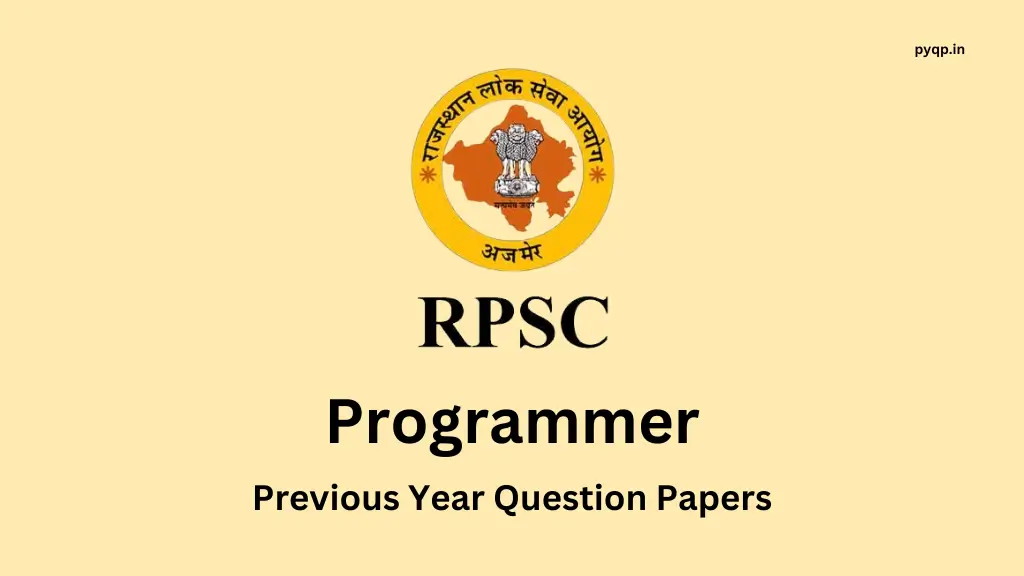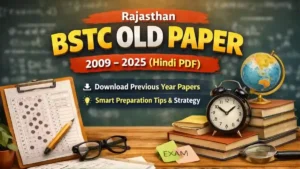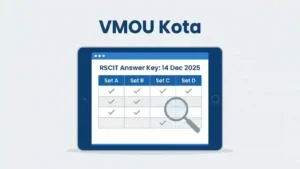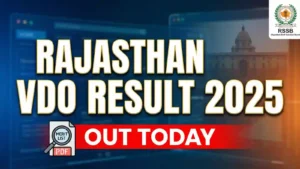RPSC Programmer Previous Papers

Rajasthan Public Service Commission (RPSC) is the main exam conducting authority for the PROGRAMMER post in Rajasthan. This article provides detailed syllabus and RPSC Programmer Previous Papers.
Age
- Minimum Age – 21 years
- Maximum Age – 40 years
Educational Qualifications
- B.E/B.Tech./M.Sc. in Information Technology or Computer Science oy Electronics and Communications or M.C.A. from a recognized University established by law in India or a qualification recognized as equivalent thereto by the Government. OR
- MTech. degree in Information Technology or Computer Science or Electronics and Communications from a recognized University established by law in India or a qualification recognized as equivalent thereto by the Government. OR
- M.B.A. (IT) from a University established by law in India or a qualification recognized as equivalent thereto by the Government.
- Working knowledge of Hindi written in Devnagari Script and knowledge of Rajasthani Culture.
Download Papers
Scheme of Examination
This examination includes two papers. A candidate must appear in all the papers, The marks and time allowed for each Paper shall be as under:
- Paper I – 100 marks – 2 hours time
- Paper II – 100 marks – 2 hours time
RPSC Programmer Previous Papers
| Subject | Download Links |
|---|---|
| RPSC Programmer – 2013 – paper I | Download |
| RPSC Programmer – 2013 – paper II | Download |
| RPSC Programmer – 2011 – paper I | Download |
| RPSC Programmer – 2011 – paper II | Download |
Download RPSC Exam Calendar 2024
Detailed Syllabus
Paper I
Data Base Management Systems
- ER Diagram, data models- Relational and Object Oriented databases. Data Base Design: Conceptual data base design, Normalization Primitive and Composite data types, concept of physical and logical databases, data abstraction and data independence, data aggregation and Relational Algebra.
- Application Development using SQL: Host Language interface, embedded SQL programming, Stored procedures and triggers and views, Constraints assertions,
- Internal of RDBMS: Physical data organisation in sequential, indexed random and hashed files. Inverted and multilist structures, B trees, B+ trees, Query Optimisation, Join algorithm.
- Transaction Processing, concurrency control and recovery management. Transaction model properties and state serialisability. Lock base protocols, two phase locking.
Data Communication and Computer Networks
- Computer Network Architecture, Circuit switching, Packet And Massage Switching, Network Structure. Physical Layer, Data Link Layer, Framing. Retransmission algorithms,
- Multiple access and Aloha. CSMA/CD and Ethemet. High Speed LANs and topologies. Broadcast routing and spanning trees.
- TCP/IP Stack. IP Networks and Internet. DNS and Firewalls, Intrusion Detection and Prevention.
- Transport layer and TCP/IP. Network Management And Interoperability.
Reasoning Test & Numerical Analysis & General Knowledge
- Problem solving
- Data Interpretation
- Data Sufficiency
- Logical Reasoning and Analytical Reasoning
- General Knowledge and Current Affairs relating to India and Rajasthan
Paper II
System Analysis and Design
- System concept: Definition and characteristics, elements and boundaries, types of system development lifecycle, recognition of needs, feasibility study, prototyping, role of system analyst.
- System planning and tools like DFD, data dictionary, decision trees, structured analysis and decision tables.
- IPO charts, structured walkthrough, input output form design, requirement and classification of forms, layout considerations form control, object oriented Design
- Concepts and methods.
- Sottware Life Cycle, Software Engineering paradigms.
- System analysis: Feasibility study requirement analysis, Cost benefit analysis, Planning systems, Analysis tools and techniques.
- System Design: design fundamentals, Modular Design, Data and procedural design, object oriented design.
- System Development: Code documentation, Program design paradigms, Efficiency Consideration.
- Verification, Validation and Testing: testing methods, Formal Program Verification, Testing Strategies,
- Software Maintenance: Maintenance Characteristics, Maintainability, Maintenance tasks and side effects.
Programming Concepts
- Introduction: Internet, Java as a tool for interenet appliations, Byte Code and its advantages.
- Object Oriented Programming and Design: Review of Abstraction, Objects ‘and other basics, Encapsulation, Information hiding, Method, Signature, Classes and Instances, Polymorphism, Inheritance, Exceptions and Exception Handling with reference to object modeling, Coupling and Cohesion in object oriented software.
- Object Oriented Design — Process, Exploration and Analysis.
- Java Programming Basics: Variables and assignments, Input and Output, Data Types and Expressions, Flow of control, Local variables, Overloading Parameter passing, this pointer, Java Object Oriented Concepts: Use of file for I/O, Formatting output with stream functions, Character I/O, Inheritance, Public and private members, Constructors for initializations, Derived classes, Flow of Control Arrays-Programming with arrays, arrays of classes, arrays as function arguments, Strings,
- Multidimensional arrays, Arrays of strings, vectors, Base classes.
- Introduction to JSP, RMI, Java Applets and servlets,
- Introduction to DotNet framework and visual programming interface.


